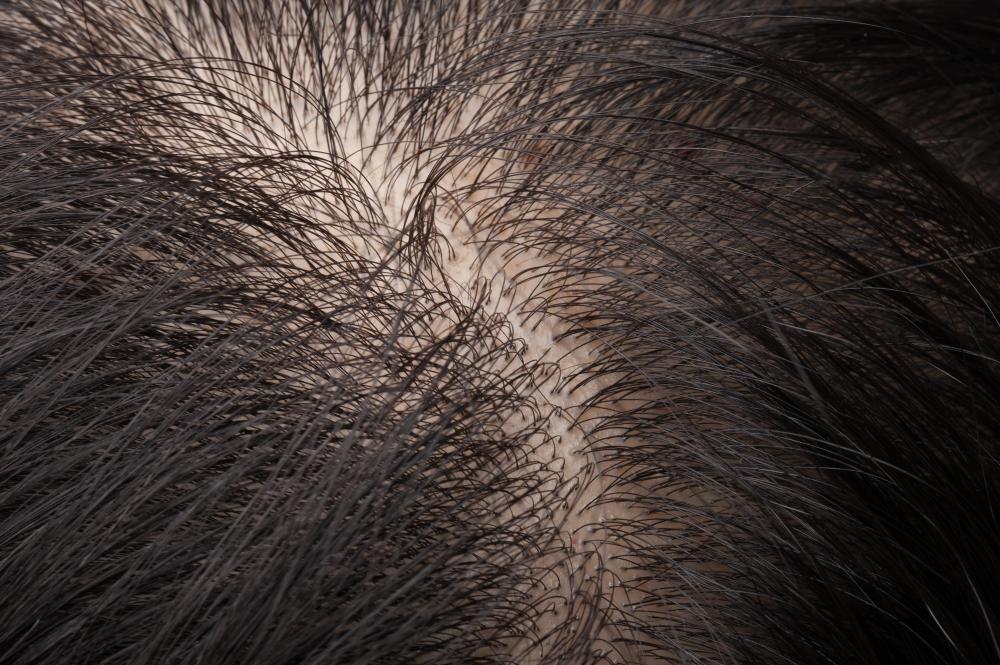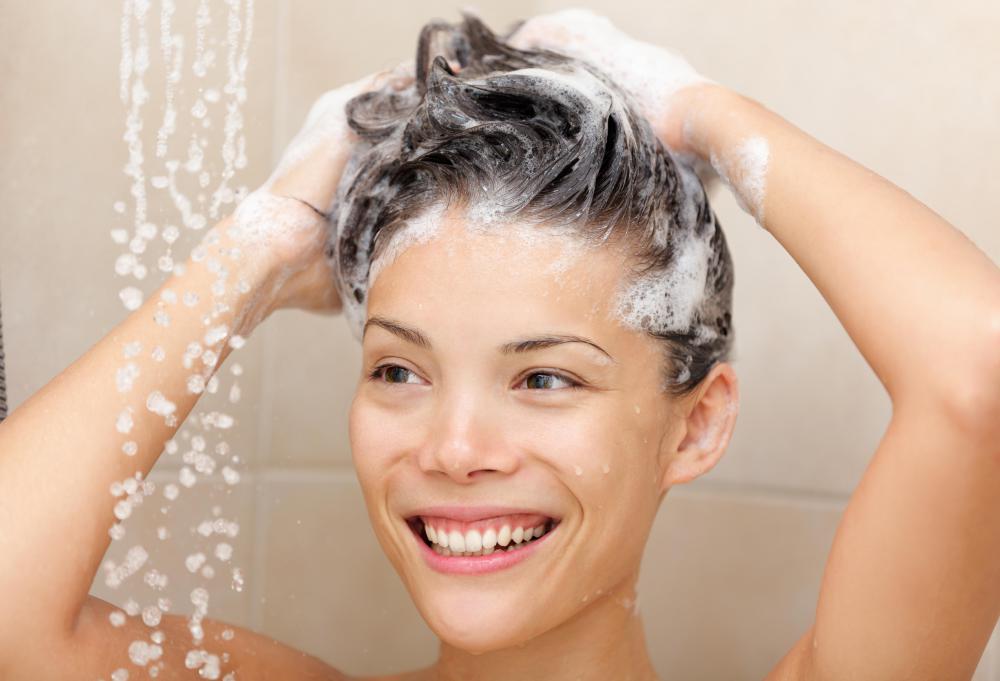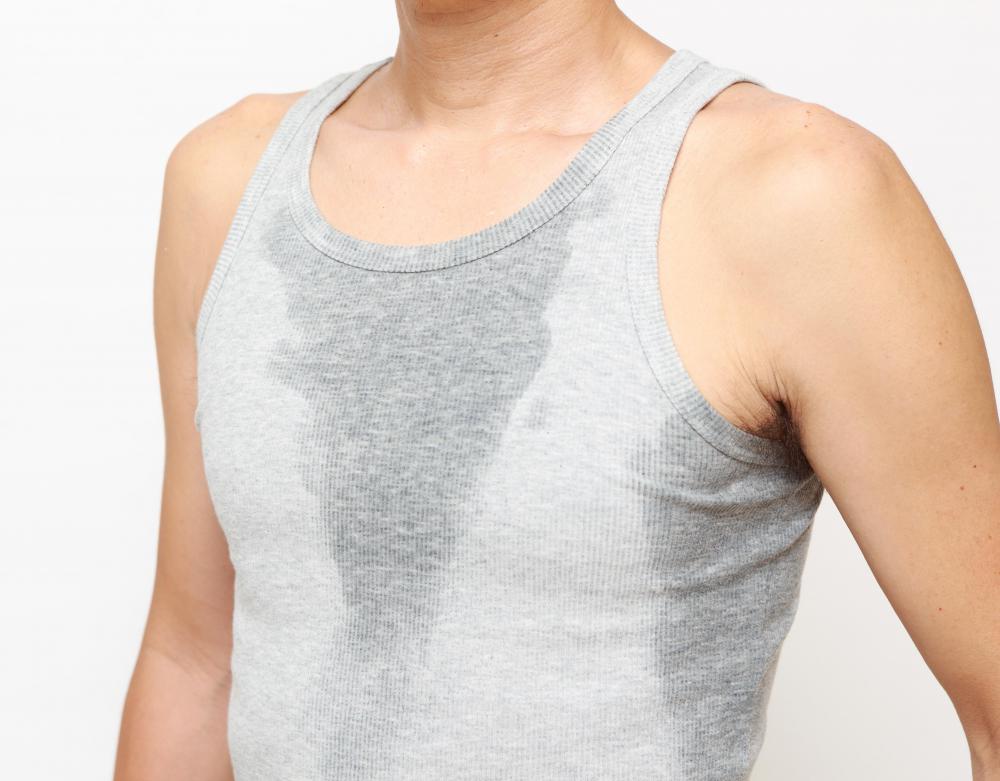At TheHealthBoard, we're committed to delivering accurate, trustworthy information. Our expert-authored content is rigorously fact-checked and sourced from credible authorities. Discover how we uphold the highest standards in providing you with reliable knowledge.
What is the Sebaceous Gland?
The sebaceous gland is a microscopic gland found in a person’s skin. In fact, the skin contains many of these glands, which produce and secrete sebum. Sebum is a yellowish, waxy substance that has an oily feel to it. It helps keep a person’s skin and hair from becoming too dry.
Sebaceous glands are attached to the bottom of hair follicles in the skin. Cells within the sebaceous gland have the job of producing sebum. In time, these special cells burst, releasing the sebum to travel through the hair follicle shaft or duct and onto the surface of the skin or scalp. The sebum secreted by the sebaceous gland consists of three different components: wax, fat, and dead cells.

Most of a person's sebaceous glands are on the parts of the body normally covered by the most hair. They are most prevalent in the skin of the scalp and face. These glands are found almost all over the body, however, even in areas with few hair follicles. A person’s palms and soles of his feet are the two areas that lack sebaceous glands.
Interestingly, sebaceous glands are also found in parts of the skin that usually lack hair. They are found on a person’s eyelids, nose, and nipples. They are also found on parts of the genitals that are entirely devoid of hair. In these places, the sebum doesn’t travel through hair ducts. Instead, it moves from the sebaceous gland and through a different type of duct to pores that normally release sweat onto the skin. Sebum is also found in earwax.

The rim of the human eyelid is also home to a special type of sebaceous gland called a meibomian gland. This type of gland works by moving sebum into the tears that form a film or coating on the eye, preventing tear evaporation. The sebum secreted by the meibomian gland also helps to make the seal of a person's closed eyelids tight and stops tears from moving out of the eye and onto the cheeks when an individual isn’t crying.

When the sebaceous glands produce sebum, the substance usually lacks any odor. It can produce odor, however, as it begins to break down on the skin. This substance can be responsible for making some people have oily hair, especially if hair washing is done infrequently and during episodes of hot weather.
AS FEATURED ON:
AS FEATURED ON:















Discussion Comments
Skin Flow Tea (epidermis, dermis, pores, follicles)
Ingredients: 35g Devil’s Claw Root (*Do not add if pregnant); 30g Nettle Root; 20g Cowslip Flower
10g Skullcap Leaf (*If Pregnant substitute with White Sage); 6 Cups Water
Instructions: Bring water to a boil in glass or stainless pot. Remove pot from heat and wait five minutes. Add ingredients into hot water and cover. Infuse ingredients for eight to 12 hours stirring occasionally. Strain tea in sieve or nut milk bag. Refrigerate tea in a sealed glass jar. One batch lasts three to four weeks.
Recommended dosage: Add 2-4 tsp of skin cleansing tea into three cups of warm water. Take three times a day for 12 weeks.
Directions: Take without food or after food. If possible, take first thing in morning 30 minutes before food, and before bed 30 minutes after food. If you miss a dose, make it up when you can. Do not mix with other herbs or pharmaceuticals.
A course of Oratane/Roaccutan will reduce oil in the skin and help with acne.
@earlyforest-- So sorry to hear about your skin -- things like that can often be very frustrating, especially when it seems like you're doing everything right.
There are a few possible causes for what's going on with your skin. First, if you have recently started using a new body wash product, that could be causing a reaction in your skin, leading to the kind of overproduction of oil that you are talking about. That's easy to test for though. All you have to do is change soaps for a few weeks and see if your skin gets better -- if so, then there's your problem.
The other cause could be a little more complex -- hormones. Although you are not going through puberty, there are tons of things that can cause your hormones to jump up and down like that, often leading to overactive sebaceous glands.
The first could be birth control. If you have recently started taking a form of hormonal birth control, that could be putting your skin in a tailspin. Another possible cause could be stress. Oftentimes the body reacts violently to stress, and manifests it as a skin problem.
If either of those sound like they could be your problem, then you can consult with a doctor about a different birth control, or ways to reduce stress in your life. If not, I would go to a dermatologist and have a skin mapping as well as discussing your lifestyle and habits.
Sometimes the littlest things can cause your skin to go crazy. I do hope this helps -- let your fellow wisegeekers know!
@earlyforest -- Those are the worst! When I was a teenager, my sebaceous glands were all acne all the time, it seemed like. I was totally desperate; I looked like one of those oily sebaceous glands before/after pictures that they show on late night TV.
The only things that really worked well for me were following a super healthy diet -- no instant food, i.e., fast food, etc, and keeping my body very well exfoliated.
I actually ended up going in for monthly body scrubs for a few years until everything finally calmed down, and now you'd never know that I had bad skin in my teens.
So sorry that I don't have an instant answer for you, but that's the best I've got -- just make sure you don't pick at them or try to poke them all the time, since you could end up with some nasty scars!
Other than that, just wait it out, and practice good diet and hygiene -- that's all I can tell you.
Does anyone have any tips on how to stop excessive secretion from sebaceous glands? I have always had kind of oily skin, but recently I have been getting a lot of infected sebaceous glands, acne, and blackheads, especially on my back.
I have not had any major changes in diet, and I'm in my 20s, so it's definitely not puberty!
Could anybody give me a better idea of what could be going on with my body, and how I could avoid getting so many gross sebaceous glands?
I'm pretty desperate here -- one more sebaceous cyst could do me in, so give me tips, please!
Post your comments